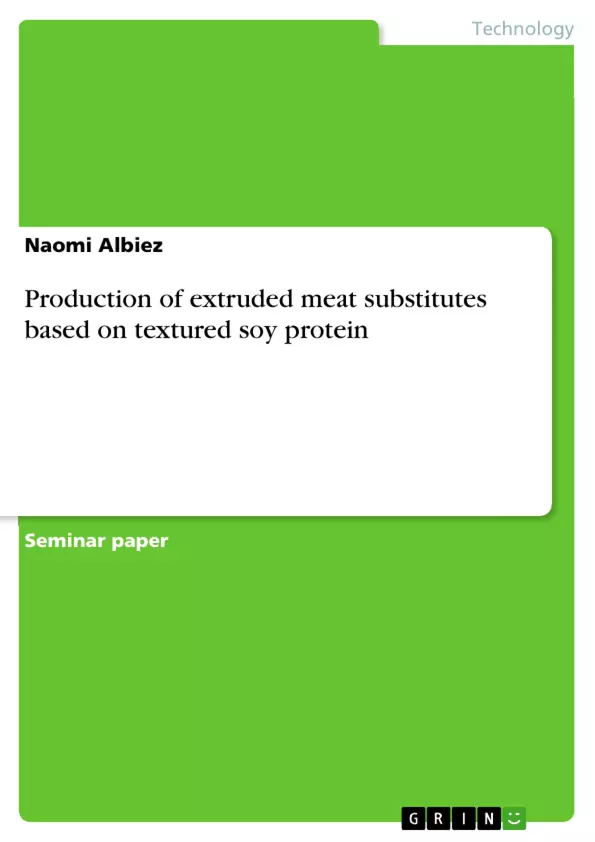The aim of this work is to provide the fundamentals of extrusion. This includes an in-depth understanding of the structure and composition of plant proteins. Based on this, the production of the raw materials is discussed, as this has a great influence on the final product. In the last step, the difference between high moisture extrusion and low moisture extrusion is explained, as well as the general set-up of an extruder.
Table of Contents
- 1. Introduction and aim of the study.
- 2. Soy protein as meat substitute
- 2.1. Structure and function
- 2.2. Protein fractions
- 2.3. Advantages of soy protein in extrusion
- 3. Manufacturing processes of protein isolates, concentrates and flours
- 4. Extrusion process
- 4.1. Basics of extrusion
- 4.2. Extruder construction
- 5. Conclusion and further considerations
- 6. References
- 7. Figures
- 8. Tables
Objectives and Key Themes
The aim of this project thesis is to delve into the fundamentals of extrusion, focusing on the production of meat substitutes using textured soy protein. It analyzes the structure and composition of plant proteins, specifically soy protein, and explores its advantages in extrusion. This work further investigates the manufacturing processes for protein isolates, concentrates, and flours, followed by a detailed explanation of the extrusion process, including the basics of extrusion and the construction of extruders. The main objective is to gain a comprehensive understanding of the extrusion process for producing textured soy protein-based meat substitutes.
- Soy protein as a meat substitute
- Structure and function of soy protein
- Extrusion process for meat substitutes
- Manufacturing processes of protein isolates, concentrates, and flours
- Impact of process parameters on the physical properties of the end product
Chapter Summaries
The first chapter introduces the increasing demand for protein and the growing interest in plant-based meat alternatives. It highlights the challenges in meeting protein demand with animal protein alone and the need for alternative sources. Chapter two focuses on soy protein as a meat substitute, analyzing its structure, function, and advantages in extrusion. It also discusses the importance of protein fractions and their contribution to product quality. Chapter three delves into the manufacturing processes for protein isolates, concentrates, and flours, explaining their significance in achieving desired functional properties. Chapter four provides an in-depth explanation of the extrusion process, covering the basics of extrusion and the construction of extruders. This chapter sheds light on the intricate relationship between process parameters and the final product's physical properties. Finally, chapter five offers concluding remarks and discusses potential areas for further research.
Keywords
This project thesis focuses on the key topics of extrusion, soy protein, meat substitutes, textured vegetable protein (TVP), protein isolates, protein concentrates, and protein flours. It explores the manufacturing processes, the impact of process parameters on product quality, and the potential of soy protein as a sustainable and healthy alternative to animal protein. The work also highlights the importance of understanding the structure and function of soy protein for effective extrusion and the creation of desirable meat substitutes.
- Citar trabajo
- Naomi Albiez (Autor), 2021, Production of extruded meat substitutes based on textured soy protein, Múnich, GRIN Verlag, https://www.grin.com/document/1193250



